5614 people reached on FB Lassi with Lavina
950 views on LinkedIn – 16 Likes
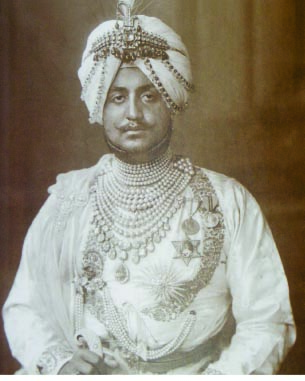
A Tale from the Past:
From Maharajas & India’s Royal Courts to Life in San Francisco
[dropcap]C[/dropcap]an an eye for jewels be in one’s DNA? San Francisco-based jewelry designer Jyotsna Singh is the granddaughter of Maharaja Bhupinder Singh of Patiala, whose shimmering, diamond-laden Cartier necklace was the stuff of legends. It was shown some years back in Maharaja: The Splendor of India’s Royal Courts at the San Francisco Asian Art Museum. At the same time Manjusha, Jyotsna Singh’s line of jewelry was shown in the museum’s store.
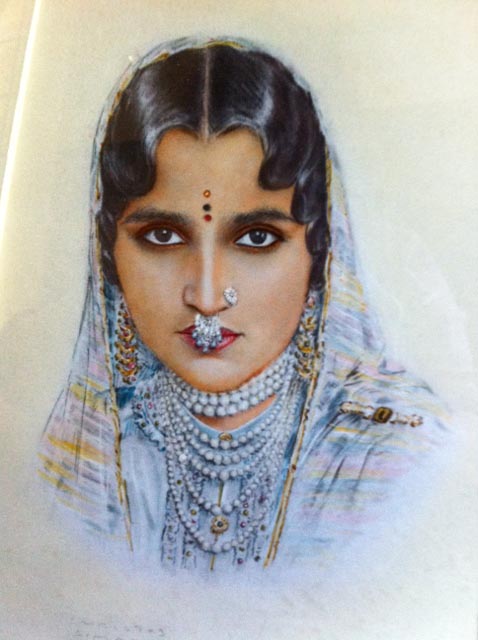
[dropcap]J[/dropcap]yotsna, also known as Joey, is a designer who came into her calling late in life. She spent her work life in the corporate world, including Levi Strauss. The love for color, jewels and juxtaposing them in different formations was always with her, inherited from her royal family connections. The result is a stunning collection of jewelry – Manjusha, which means a treasure chest of jewels. It presents fusion jewelry which echoes the beautiful color and cut of antique jadau sets with a touch of modernity.
Here she talks about her past, her colorful royal family and life as a jewelry designer.
1. Where did you grow up and what are your memories of the royal family?
I grew up in the vicinity of Delhi but went to a boarding school in Simla Hills for 9 years. My earliest memories are always about the Patiala family gatherings. It is an extremely good looking family. The image of a wedding sticks clear in my mind. The aunts were beautiful and all dressed up in their chiffon saris or Patiala salwars. They had exquisite jewelry on and they wore tikkas with jeweled drops.
The men were tall, dark and handsome in their pale pink Patiala turbans and achkans. The gathering was always full of fun and laughter and I felt they were much more fun than my own friends. They loved to be together and needed no one else. And the ballroom dancing! The brothers and sisters danced with each other and you felt they were floating on the ground. For a child the whole scene was enchanting.
2. Your grandfather, the Maharaja of Patiala is a larger than life figure in all the colorful tales of royalty in India. What were the stories your mother shared with you of your nana and nani.
Naniji came from the hills in Simla. She was quiet, beautiful and young and she lived in the zenana with the other women. Though the mothers lived at the palace and spent time with the children, the children were really brought up by English governesses. My grandfather lived in the main Motibagh Palace with his wives and his older children.
My mother was one of 32 of the younger children and they lived in Lalbagh Palace in the palace grounds. The grounds also had a zoo, a small train, a lake with boats. The children would visit their mothers in the zenana a few times a week as they did their father. When the kids visited their father, he would let them enter a large room full of toys. Each kid could pick up what they wanted before leaving.
They were brought up by English governesses. Hence they all had English names because their Indian names were difficult to pronounce! My mother’s name was Elsie. She was one of 52 children, my mother would say a pack of cards!
They would change their residence in summer and the whole palace would leave in Rolls Royce’s to Chail and Kandheghat. The Patiala kennels had 400 dogs. They dogs would also go, as would the Jersey cows! Everyone left for the hills! The children were given gold mohurs (coins) and as they left the palace grounds and entered the city in the cars they were asked to throw them into the crowds. The people would announce that the children of Maharaja Bhupinder Singh were entering the town.
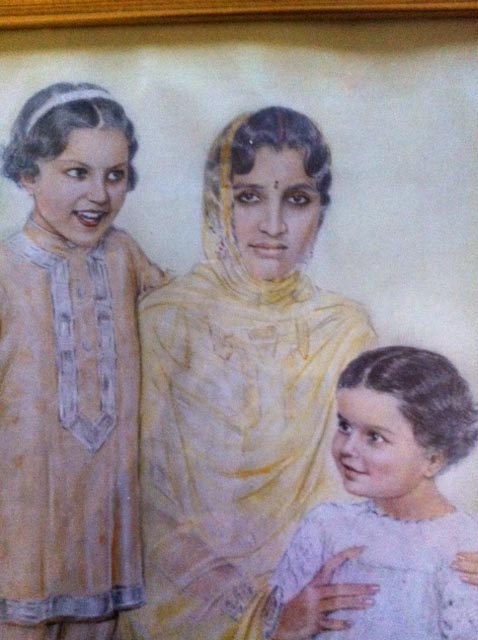
3. You mentioned you spent time with relatives who were from another royal family – could you elaborate?
I spent many of my childhood Christmas’s with HH Tukoji Rao Holkar of Indore and his wife Sharmistha Bai (Nancy Miller of Seattle). He was from the same time of my grandfather and I called them my grandparents. The 6 seater Rolls Royce would come and pick us up at Ratlam Station. The chef who had been trained at the Ritz in Paris would prepare a gourmet snack basket for us to consume on the two hours ride. When we arrived at the palace, we were greeted by a regiment that kept guard and HH Tukoji Rao and his lovely American wife Sharmishta Bai would greet us with these enormous garlands.
We spent a month each year in a dream-like state in this enormous palace. The durbar hall had a roof painted with Italian frescos, like Versailles. The stuffed tigers in special cases were enormous and frightening, especially if one walked the palace corridors in the evening. There was one room made of carved sandalwood. The entire room was carved – I have never seen anything like it! The jewelry was indescribable, I remember the rubies…deep red rubies. Much of our time was spent on fun activities like outdoor cooking for night picnics, preparations for Christmas, and meeting visitors.
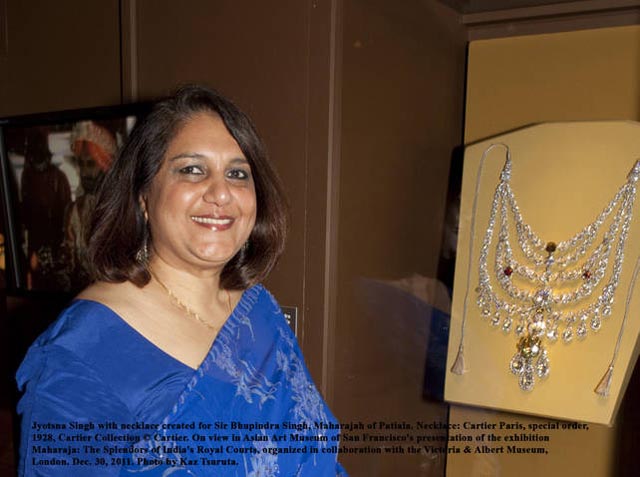
4. You moved to the US and your life as a Levi Strauss employee was probably very different from that of maharani! Can you elaborate?
My father did not come from royalty so my life was like anyone else’s except for those times I spent in palaces and with family. I adapted easily to life outside the country; however it took me some time to get used to people. I was used to a gentler upbringing and did not really know how to handle aggressive and corporate competitiveness. I think many of us have had the same experience. Levi’s came later and I was quite used to it. I forgot my heritage in just coping with life. Besides I had been conditioned not to talk about where we came from and who we were.
5. Most people hang on to keepsakes belonging to their grandparents. What do you have and treasure?
Jewelry – but most precious is an enamel pendant with a portrait of my grandfather, surrounded by rubies and pearls. Also a machli (nose ring) worn by my grandmother, now made into a pendant for my granddaughter. I have some clothing of Naniji and silk vest and hanky of my Nanaji. We took a lot for granted and did not think of preserving either the stories or the possessions.
6. All in all, there must be a big tribe of cousins and uncles and aunts. Do you ever meet or feel the heritage of those past days?
I had many grandmothers. People ask me how many? We didn’t care so we never really counted them! There was always someone being born. My youngest aunt was born a few months after my grandfather passed away. I have 150-200 cousins all around the world.
Unfortunately many of my aunts and uncles have had untimely deaths. My mother was very attached to her family but she passed away at the age of 68. We still have gatherings and they are always special. We laugh till we cry because no one can understand the eccentricities of the family other than us.
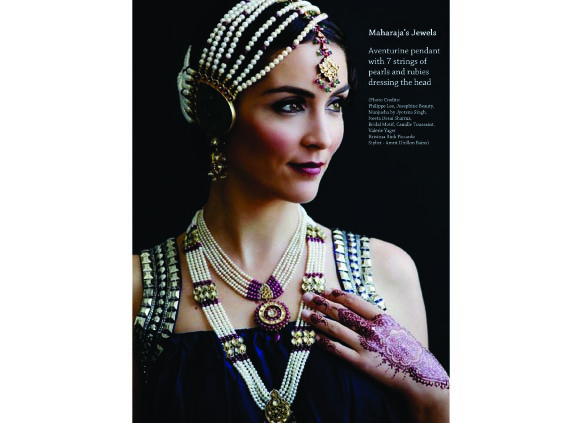
7. You must have inherited the eye for jewels from your grandfather. Do you think he would have been pleased with your creativity and re-invention of jewels in varied designs?
I never thought of it till my jewelry was showcased at the San Francisco Asian Art Museum that currently houses the Patiala necklace in the exhibition hall. I felt enveloped by Maharaja Bhupinder Singh’s blessing, and my mother and I know they would be very proud of me. I have been amazed at the response of people to my jewelry and I can only attribute the passion I have for what I do to the lineage I carry.
8. Describe your line – what are its strengths and how do you go about creating it?
I seem to have an eye for creating royal-looking pieces in semi-precious stones. Hence what would cost thousands of dollars will cost a few hundred. I think my strength lies in the combination of designs, color and stones. I always have designs in my head and it manifests in the form of a crude design. This is refined and changed a few times. Simultaneously I picture the stones and colors, write details and scan it to the people I work with in Jaipur. In most cases, the piece that emerges is always more beautiful because you can’t quite picture the beauty of stones. They are magnificent in reality. I also visit Jaipur several times a year.
9. What stones do you use and does this all also have a spiritual aspect to it?
Absolutely. For me a stone is a living vortex of energy, some more powerful than others. Though I am not an authority on the spiritual significance, I know intuitively about certain combinations of stones. For example, I love lapis, amethyst, citrine, carnelian, turquoise, and labradorite. These are all very powerful energies in combination with other stones. I neutralize my necklaces of all negative energies so that the wearer may benefit from the positive energies of the stones.
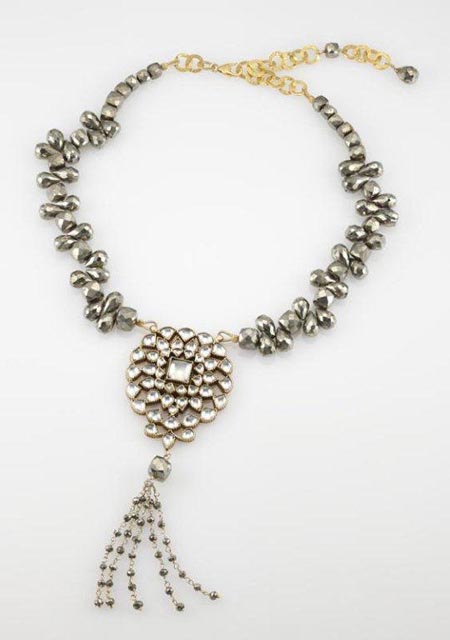
10. Where do you sell your jewelry and how were you connected with the recent museum shows on the West Coast.
I sell in private shows. My line is currently in SF Asian Art Museum. As I mentioned the Museum is also carrying an exhibit “The Maharajas” where the Patiala Necklace is on exhibit from the Cartier collection. I’m active on Facebook and my website will soon have a selling site.
11. Who are the buyers for your line? I believe you are also selling in Brazil?
I am selling in Brazil, I go there again next month. I have also sold in India and Thailand. My focus however will be the US. I have invitations to go to Europe, Dubai and Kathmandu.
12. What have you told your children about their royal heritage and do they ever go back?
I took both my sons with my mother to Patiala some years ago. They are the 11th generation of the Patiala family. They saw the palace that my grandfather lived in, the life size statues in the grounds. Most of the palace and its grounds have been destroyed.
They saw the founder of the state Baba Ala Singh’s fort. He was blessed by the 10th Sikh Guru Guru Govind Singh and given a light (jyoth) which is still lit in the fort. We spent some nights in the new Motibagh palace of Maharaja Yadavindra Singh and they enjoyed the library and all its treasures. I have shared many stories with them as did their grandmother. They are very aware of their heritage and proud of it.
When my granddaughter Aanya turned 6 months old, I wanted to give her something I had made for her. I turned the ruby and diamond Machali (nose ring in the center of the nose) that my grandmother is wearing in the picture, into a pendant and strung it with rubies, emeralds and pearls and gifted it to Aanya.
One day she will know that it belonged to her great-great grandmother….
Facebook page: Facebook.com/manjushajewels
Website: www.manjushajewels.com
Related Articles:
Indian Maharajas, Palaces and Jewels
Evening in Rajasthan Raises $450,000
Royal India Gala

14 Comments
Jyoti Singh via LinkedIn
Lavina Melwani hi, i would love to connect. Definitely. Should be back in USA mid Aug.
Delighted to hear about this! Do connect with me and we could perhaps do an additional piece on Lassi with Lavina.
Jyoti Singh via LinkedIn
Nice. I am making a film “yadvi-the dignified princess” set to release small scale in india on 4th aug. about Maharaja Bhupinder Singh’s daughter. From is 3rd wife, Maharani Vimal kaur.
Thank you – there’s another article about Indian royalty you might enjoy on Lassi with Lavina. The link is http://bit.ly/2uegMlf
Salil Gulve via LinkedIn
Very Interesting… Enjoyed reading it…
Bridget, so glad you enjoyed the article. The Maharajas always make for addictive reading – check out this one too – Maharajas, Palaces and Jewels
Thank you Saumya for sharing this wonderful story – Uncle Randhir-Raja seems a fascinating person – maybe it’s time to look him up!
This brought back my childhood. Raja Randhir Singh (grandson of Maharaja Bhupindar Singh) was a family friend and lived up the road from us in Dehradun.
I was an awkward, difficult kid and did not have many friends; I was athletic and outspoken which did not fit the cultural expectations for girls, so was always in some sort of trouble. Uncle Randhir-Raja (as I called him) was remarkably kind to me. We spent quite a bit of time together.
Uncle Randhir-Raja encouraged me to keep riding horses and speaking up for myself. He accepted me as I was, and became one of the few adults that I genuinely trusted. His home, and his presence, were counted among my few sanctuaries. His house was full of marvelous old swords, antique firearms, and various family heirlooms; he was a natural storyteller and shared epic tales of his family and Indian history while we drank gallons of tea from a gigantic silver teapot. My first glimmers of interest about the complicated history and continuing impact of Colonialism came from his recollections of his own childhood.
He had a skeet-shooting range on his property and taught me to shoot, then went riding with me and taught me to shoot from horseback. He also helped refine my use of a “dunda” (iron-bound quarterstaff) to defend myself on horseback without whacking myself in the face. That’s a skill that came in handy. In those days, being a girl on a horse meant regular harassment and occasional physical attacks by men.
Uncle Randhir-Raja also gave me one of the best compliments I’ve ever received, when he said he admired my Hindu parents very much, but that I was a born Sikh. A couple of years later, I became an honorary Sikh (long story) and when I stopped by his house to show off my kirpan, the ceremonial dagger carried by Sikhs, he was delighted. Many, many years later my family discovered some ancestral information and found out that we had many Sikh forbears.
We had lots of little adventures together. I remember one day some trunks were being aired out on Uncle’s lawn. They were full of traditional clothing from his royal family, everything heavily embroidered with gold thread and gems. We played dress-up. I wore an outfit usually meant for boys: a long tunic and leggings. He taught me to tie a turban, which, after several failed attempts, stayed on my head. He even let me wear one of his swords. We piled on jewelry. I had tennis shoes on. Then, clanking with bangles and necklaces and waist-chains, dressed like royalty -literally!- he sent for the horses and we went shooting. We looked both elegant and ridiculous, and laughed so hard neither of us could shoot straight.
I haven’t seen Uncle Randhir-Raja for many years. Someday I would like to find him, and thank him for the love and support he gave me during some very difficult years. And for teaching me to use a quarterstaff!
love your article about the Maharaja of Patialas, thank you for sharing it 🙂
I have very rare Vandyke camera photographs signed by Maharaja Bhupinder Singhji in my collection.
If you are interested, please mail me your contact details.
Pardeep Kumar, Patiala
I am interested in getting a portrait / poster /painting of Maharaja Bhupinder Singh….Is there any way I can contact you? Thanks
I have a good collection of original Paintings of
MAHARAJA BHUPINDER SINGH JI of Patiala.
Thanks, Prem! I love old pictures too and stories of the past.
Gorgeous photographs and a fascinating interview with a Royal designer.
A quick glimpse of the Maharaja era in India